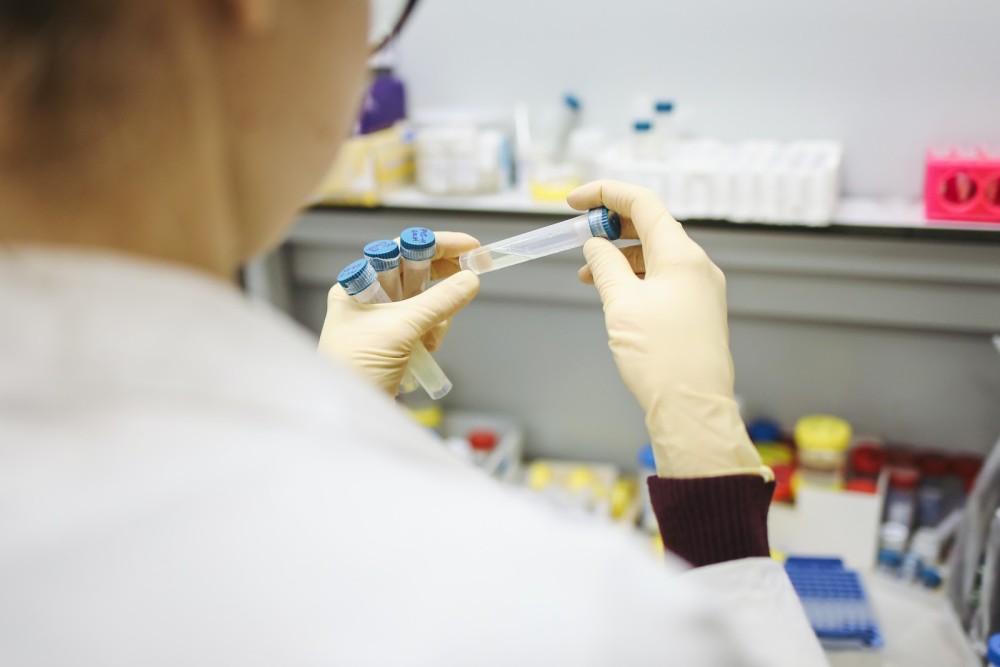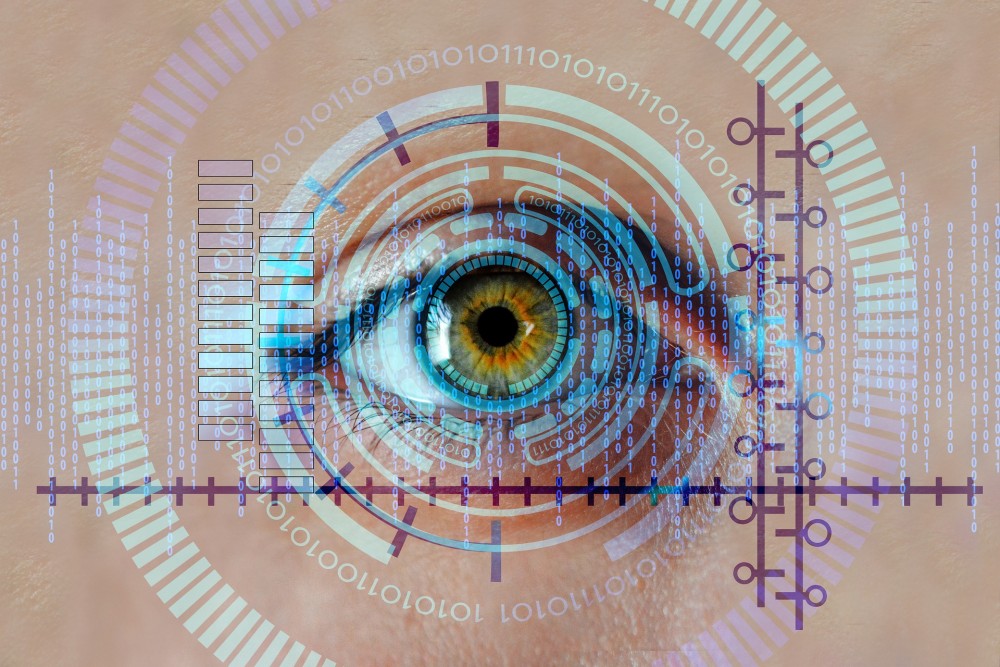AI is already intertwined in numerous sectors. As we’ve seen in the AI trends for 2021article, 2020 was a time when companies needed to accelerate the adoption of AI-based systems with a breakneck speed in order to adapt to digital working environments.
AI is omnipresent in our lives and an integral part of business success. As the current year is dwindling, it’s clear that enterprises need to find a way to safely, creatively, and boldly apply AI to emerge stronger both in the short-term and in the long-term, emphasises Forrester. In 2021, AI will become even more commonplace, and with this, the AI divide will grow more ubiquitous. Losers and winners will be determined by the level of access to AI technologies and how they leverage them. On the individual level, some companies are always more advanced than others with applying new technologies. Although AI tools are being applied in nearly all industries to a greater or lesser extent, below are the domains that will stand out in terms of putting AI to use in their operations on a global scale.
Cybersecurity
Experts predict that data will be at more risk of cyberattacks in 2021 and beyond. On the positive outlook, AI and ML technology is increasingly integrated into cybersecurity systems for both corporate systems and home security. AI is a welcome addition to security departments fighting against cyberattacks, especially as malware, ransomware and DDoS attacks are constantly evolving. Forbes mentions several vendors that are successfully deploying AI for preventative cybersecurity and automated resolution.
AI-powered security systems will be able to collect data from transactional systems, communications networks, digital activity and websites, as well as from external public sources, and detect suspicious digital activities and identify threatening activity – such as suspicious IP addresses and potential data breaches. This is a crucial aspect of cybersecurity as more and more employees work remotely and often on personal, unsecured devices.

Healthcare
Even before the pandemic, the healthcare industry benefited a great deal from the AI advancements. Many AI solutions were created to enhance healthcare capabilities and capacities. But after the COVID-19 outbreak, AI and big data proved indispensable in mitigating the risks of the disease by identifying patients and potential hotspots. AI-driven solutions such as thermal cameras and smartphone apps measure individuals’ temperature and collect data for healthcare organisations. Pharmaceutical companies are also deploying machine learning algorithms in order to shorten the drug development cycle.
AI has proven to be a helpful ally to healthcare professionals in general. Ml and predictive analytics help authorities gain insights into individual medical records and take the necessary measures. A recent trend related to this is AI watches that monitor patients’ vitals and enable doctors to track their health remotely.
As seen by the BlueDot detection of the pandemic outbreak back in December last year, AI is instrumental in detecting possible epidemics worldwide. As Kamran Khan, founder and CEO of BlueDot stated, a major benefit of using AI is the ability to keep tabs on other outbreaks that are happening around the clock while people’s attention is on coronavirus. Researches are now focused on advanced AI algorithms for accurately predicting future outbreaks.

Facial Recognition – Ethical Issues and Breakthroughs
Facial recognition is one of the trends that caught the world’s attention in 2020 and will continue to dominate the industry well beyond 2021. When put to good use, facial recognition technology helps us log into our phones, facilitates biometric passport control, supports identifying and tracking criminals and terrorists. It was also implemented to fight the spread of coronavirus in Moscow and China and track whether people are wearing masks and staying in quarantine.
However, facial recognition becomes detrimental when used for mass surveillance, racial profiling, or violations of human rights and freedoms. As a protest against racial injustice, several leading vendors, including Microsoft, IBM and Amazon, announced that they limit the use of their AI-based facial recognition technology to law enforcement until clear laws and regulations are governing its use.
Experts agree that the total ban on facial recognition is not the solution. There are real advantages from it in various fields such as security, healthcare, personalised customer experience, retail, aviation, etc. What domain professionals expect is that governments start adopting laws and regulations for facial recognition and biometric technology ensuring individual rights are respected, data security/GDPR is maintained, data governance is clearly applied, and bias is monitored at every stage.

Workplace AI
Forrester predicts that in 2021, more than a third of companies in adaptive and growth mode will look to AI to help with workplace disruption for both location-based, physical, or human-touch workers and knowledge workers working from home.
Some of the most significant use cases where AI will be applied are intelligent document extraction, customer service agent augmentation, return-to-work health tracking, and semi-autonomous robots for social separation. Overall, we can expect more AI-enabled solutions in the workplace that will provide new user experiences, better outcomes, and ensure we achieve our goals in a timely and efficient fashion. AI in the workplace is closely related to the RPA and hybrid workplace trend. But RMSI suggests that organisations would have to consider if simple task-based automation tools are the answer to their problems or they need to adopt a mix of AI and other advanced technologies to achieve cognitive automation and real intelligence.

New AI Use Cases and Experiences
Forrester predicts that 2021 will see AI giving a new dimension to everyday experiences. The boldest companies will push AI to new frontiers creating holographic meetings for remote work and on-demand, personalised manufacturing, gamification of strategic planning, building simulations in the boardroom, and intelligent edge experiences, to mention a few.
Empowered by the innovators’ and early adopters’ success, laggards will leverage no-code automated machine learning (AutoML) to implement hundreds of AI use cases faster, surpassing their competitors who still rely on data science teams applying traditional, code-first ML.
Travel, Transportation & Hospitality
Almost every person today has access to a personal assistant on their phone that can handle travel and transportation activities, make reservations for flights, rental cars, hotels and restaurants based on personal preferences. On an industry level, travel agencies and companies in tourism and hospitality that will provide AI-enabled traveller personalisation features in 2021, such as those enabled by a digital agent or smart ticketing system, will gain an edge over competitors, states DXC.technology.
However, these capabilities can also benefit a large number of other related industries. Companies in long-haul trucking, air, sea and rail-based shipping, and localised delivery services can optimise their supply chains and reduce costs with AI. For example, AI can help companies reroute shipments when there is a potential disruption in the supply chain.
Another AI-based technology that is well underway to disrupt transportation is self-driving or autonomous vehicles. They are predicted to have a massive impact on several sectors such as public transportation, delivery vehicles and personalised ride services, particularly for populations like the elderly or handicapped.

Manufacturing
The pandemic highlighted the need for innovative solutions to keep supply chains and operations running when restrictions on the number of employees in a single factory are limited due to the safety measures. The demand for advanced technologies such as AI and automation has never been higher, as manufacturers are looking for ways to use machine data to optimise the process from production lines to getting products on the shelves and ready to use or offer tailor-made services to customers.
Like never before, AI enables manufacturers to turn a proposal into concrete ideas for product design, optimising the supply chain and moving to a more efficient, real-time manufacturing model. This transformation will accelerate even more in the upcoming years. For the future, experts see factories becoming too complex, with the Industrial Internet of Things (IIoT) collecting massive amounts of data via sensors and cameras on the floor. To deal with this swelling complexity, manufacturers will increasingly rely on AI to make sense of the data and create insights to future-proof operations against possible economic disruptions.
These solutions will also be accessible to more local, “mom-and-pop” businesses, and not only to large companies, as it was the case. But the manufacturers’ focus in 2021 will be on inexpensive and lightweight solutions with the biggest ROI, over those that are more complex and expensive. These solutions will also give them the flexibility to adapt to changes in the supply chain and customer demands which have been one of the biggest challenges of the pandemic, highlights Industry Today.

Banking
2020 also saw banks expanding new, contactless, digital customer services to strengthen customer relationships while providing safe services to everyone. The digital support channels generate terabytes of data that is deployed by AI models to provide useful insights and intelligence in uncertain times.
As a result, financial services firms are increasing their adoption of AI and machine learning to capitalise on the data from new digitally driven channels, states Forbes. Supporting this trend is an Economist Intelligence Unit (EIU) research report that found that 86% of Financial Services executives plan on increasing their AI-related investments through 2025.
What’s more, with AI’s help, financial institutions could provide personalised services to their customers, similar to the services personal financial advisors provide for their affluent customers. Chatbots can facilitate more personalised, financially advantageous banking experience for customers and offer cost savings and increased revenue opportunities for banks.
The future of banking is in the AI-first bank – intelligent, personalised, and omnichannel. In addition to the AI-first banks, experts predict mobile-first banks that exist only in mobile applications (without physical branches that are not flexible but are costly) powered by artificial intelligence and machine learning, states Robotics and Automation News.

Insurance
Insurance companies could also greatly benefit from AI technology. They could leverage AI to correlate various types of actuarial information, driving history, etc., to gain insight into their customers and offer them personalised services.
What’s more important, AI and machine learning could automate many aspects of insurance like underwriting, risk assessment, and fraud identification processes, freeing up insurers and underwriters for more important tasks while improving accuracy and efficiency. With time, the AI will identify emerging patterns and get better in spotting insurance industry trends.
But beyond risk evaluation, the insurance industry could also advocate safer behaviour for everyone with the help of AI. For example, correlating driving data from the car’s braking system with lower auto insurance rates, or providing people with incentives to work out or lose weight.
Conversational AI (Chatbots) for Better B2B Customer Journey
According to Forrester, AI-powered chatbots, also known as Conversational AI, will evolve into better customer service automation. With social distancing, the B2B buyer journey has moved almost completely into the digital sphere. Buyers will continue to expect communication with vendors primarily through websites, search engines, and technology information websites. Therefore, organisations that fail to meet customers’ expectations for a seamless digital journey will lose their market share, warns Forrester.
Chatbots and virtual assistants can help B2B organisations close this digital experience gap with the assistance of automated conversations. Rather than focusing on creating the quickest possible handoff to sales, B2B marketers can adopt a more empathetic approach and reorient their chatbots and VAs to help more buyers toward their goals, by handling more open-ended questions and making personalised content recommendations, suggests Forrester.

Telecom & Media
Forbes describes telecommunications as one of the fastest-growing industries and one that uses artificial intelligence and machine learning in many aspects of their business from enhancing the customer experience to predictive maintenance to improving network reliability. Hence, AI and Machine Learning are identified as one of the top five trends that will mark the telecom industry in 2021 and beyond.
AI technology has been deployed in the telecom industry to optimise customer service, tapping into behavioural insights. As seen above, chatbots and VAs can automate customer service calls and messages. The investments in AI and ML that yielded a competitive advantage in 2020 will continue in 2021 as well. The VoIP industry will use AI to improve service delivery by providing consumers with self-help solutions and opportunities and analysing call centre interactions and predicting challenges customers may face.
The media industry has also turned to AI to solve its challenges, and it will keep on growing in various media aspects in 2021. Media professionals use AI to expedite repetitive tasks, streamline captioning, filter and distribute news, leaving more time for creators to spend on actually creating. With the abundance of fake news, media companies rely on AI tools to source and fact check a story to identify potentially unreliable sources.
One trend that will also see a rise in popularity among broadcasters in 2021 is “automated journalism”. Journalists will actively use AI in media production processes. AI allows them to gather content, understand data pools, compose and distribute media at the click of a button with no human intervention. Personalisation plays a vital role in the media, just like other industries we’ve seen. AI and ML offer to deliver more personalised and engaging content through recommender systems, based on individual users’ preferences.

This article was published in Hyperright Read.




